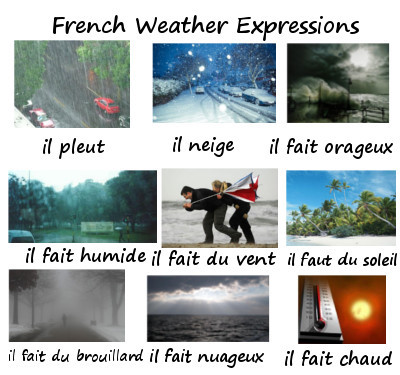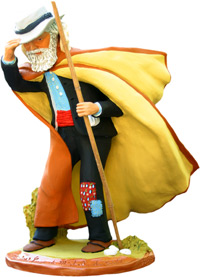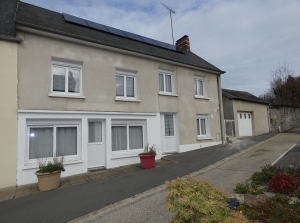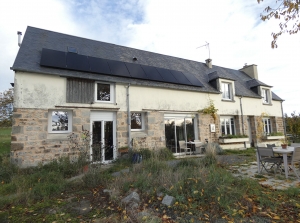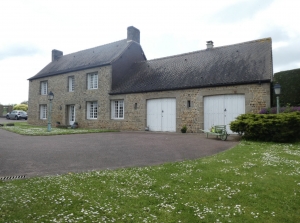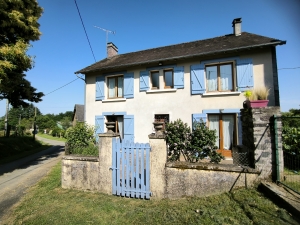Snow and low temperatures aren’t so bad. Winter sports can be fun. Icy roads aren’t appealing, but they’re doable. But when there’s a strong wind in the winter? Non merci. I’d prefer to stay indoors pour boire mon chocolat chaud (to drink my hot chocolate).
The south of France is known for its Mediterranean climate – hot, dry summers and cool, wet winters. The summer and fall were great, and I didn’t think the winter would be too terrible. Imagine my surprise when I found out about an extremely strong wind called le Mistral.
Le Mistral is a bitter cold wind that comes from le Massif Central mountain range located in the center of France. When a high pressure area (in the Bay of Biscay) meets with a low pressure area (in the Gulf of Genoa), the wind comes sweeping down blowing north/north-west into Montpellier, Lyon, Marseille — straight down the Rhône River — and even as far south as Corsica and Sardinia and parts of Northern Africa.
It takes your breath away and makes it hard to breathe in the winter, but à quelque chose malheur est bon (every cloud has its silver lining). The wind is dry and generally accompanied by sun, so despite its bone-chilling effects, it’s in part thanks to this vent de fou (crazy wind) that Provence boasts its celebrated and sunny climate. Whenever there’s the Mistral, it won’t rain.
Le Mistral est plus fort en hiver et au printemps (The Mistral is strongest in winter and in spring), but it makes its presence known year round. Unlike in winter, it’s very welcomed in the summer when you need to cool off. When we were outside, I had a friend who would tell us all to raise our arms as soon as the Mistral blew so we could dry off, haha.
It has been known to have a velocity of up to 100km (just over 62mph), and the effects can be seen sprinkled throughout the region. It’s not uncommon to see des arbres couchés (bent trees) in the direction of the wind.
In Provence, there are traditional roof tiles you put on your house. It’s a rectangular, curved terracotta tile that’s stacked on the roof. They’re much heavier than the rubber ones commonly used in the States or slate or clay used in the UK. You don’t want these flying off the roof because of the wind, so it’s not uncommon to place heavy stones on the tiles to protect them from being uplifted.
Trees sometimes line the perimeter of les champs (the fields) to protect the crops from wind erosion. Some bell towers aren’t closed in and are left open so the wind can breeze through it. Check out some examples below.
Are your kids uncontrollable tonight? Dog won’t stop barking? Feel like you’re going crazy and want to go on a rampage? Much like la pleine lune (the full moon), the Mistral is said to have a behavioral effect on people and animals.
C’est à discuter (that’s debatable), but at least the moon doesn’t cause cracked skin and lips. And it’s not a one-day event. On dit que (they say) that the wind comes in groups of 3 – if you have it for 2 days, there will be a third.
Jamais deux sans trois (never 2 without 3 – an expression meaning that if 2 successive bad things have happened, there will be a third). If it goes onto day 4, you can expect it until at least day 6, and so on.
You can also find examples in French culture. In December, I wrote a post about Provincial nativity figurines called les santons. You can find certain characters holding their hats as they are walking against le Mistral, which is evident because their cloaks are flying back. Guess les santonniers (santon makers) wanted to keep the portrayed provincial life as authentic as possible.
If you’re a fan of classic literature or theatre, you may have read Rostand’s “Cyrano de Bergerac” Even if you’ve never read it, you’re probably familiar with the balcony scene where Cyrano whispers to Christian what he should say to Roxanne to impress her.
In another famous scene called la tirade du nez (the nose monologue), a viscount poorly insults Cyrano by telling him his nose is “rather large.” Cyrano puts this man in his place by listing a number of different adjectives and with each one, presenting a better way to express yourself other than the ridiculous “rather large” insult.
Check out the Mistral’s special appearance: Emphatique: “Aucun vent ne peut, nez magistral, T’enrhumer tout entier, excepté le mistral !” (Emphatic: ‘No wind, O majestic nose, Give THEE cold, except the Mistral “). To give Cyrano a cold, the Mistral must really be something…
Because of all this talk about wind, I thought it would be a good idea to give some vocabulary and expressions related to le vent.
il y a du vent – it’s windy
il vente – it’s windy (common in Canada)
un souffle de vent – a breath of fresh air
un vent de panique – a wave of panic
un vent glacial - ice-cold wind (like le Mistral!)
un vent violent – howling wind
un vent léger - light wind
un brin de vent - a light breeze
un coupe-vent - a windbreaker
avoir le vent en poupe - to be on a roll / to be riding high
avoir vent de quelque chose - to get wind of something
avoir du vent dans les voiles - to be three sheets to the wind (drunk)
avoir le nez au vent - to go whichever way the wind blows you
mettre un vent à qqn / coller un vent - to snub/ignore somebody / to blow someone off
partir en coup de vent - to leave in a hurry / to pop in
se prendre un vent / se manger un vent - to be ignored by someone
être dans le vent - to be hip / to be with it (this isn’t used so much anymore. try être branché(e))
Autant en emporte le vent - Gone with the Wind
bon vent - God speed / farewell OR the complete opposite: good riddance
C’est du vent - it’s nonsense / a bunch of hot air
quel bon vent vous amène? – What brings you here?
Thinking of moving to France full time? - book a viewing trip with Cle France today!

Blog submitted by: Alex at The French Property Network - Cle France.
This blog was originally posted on The French Language Blog pages.
